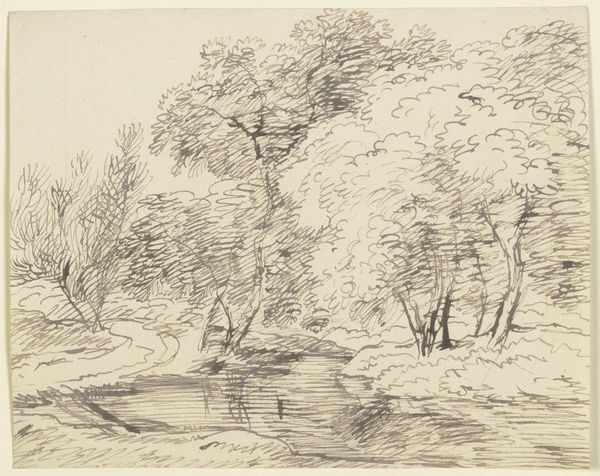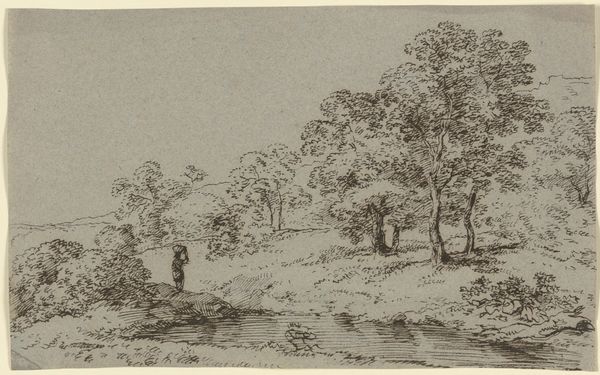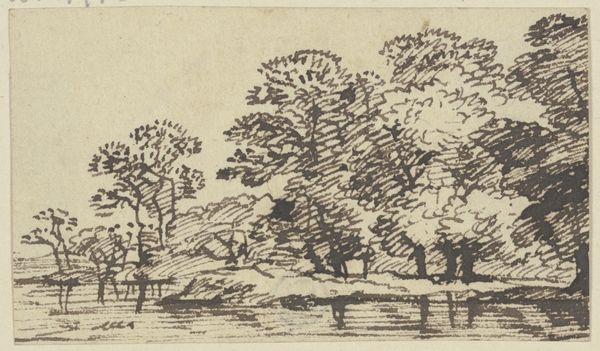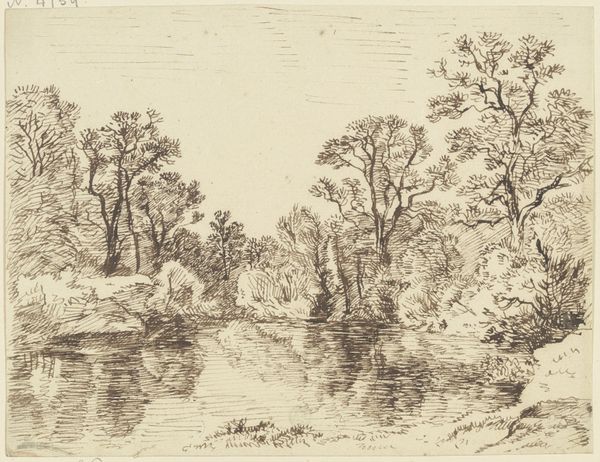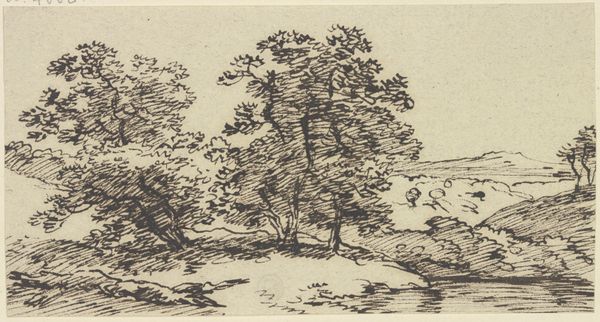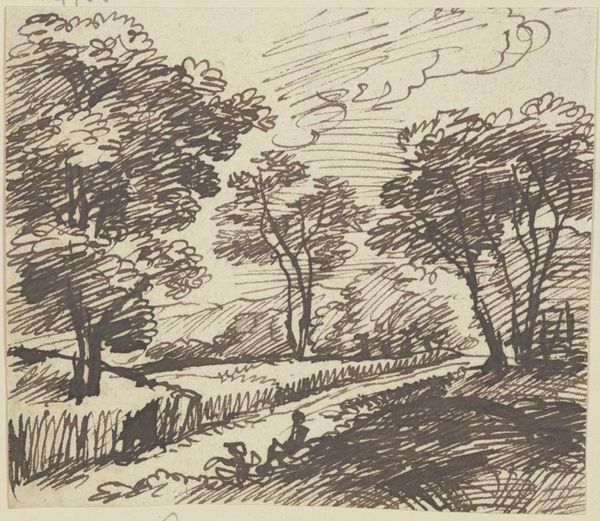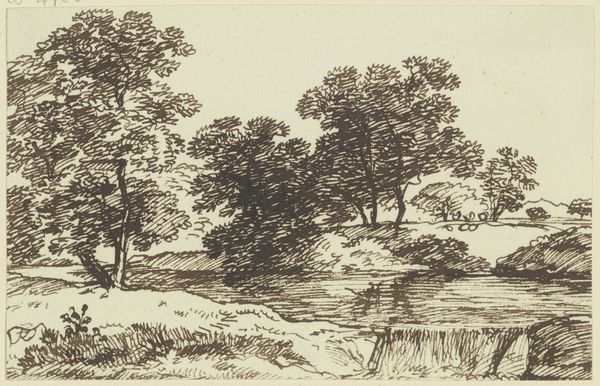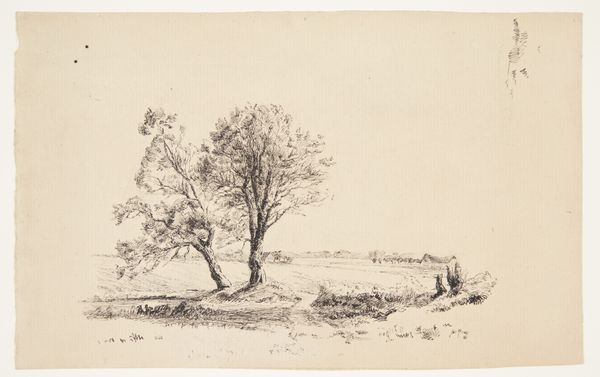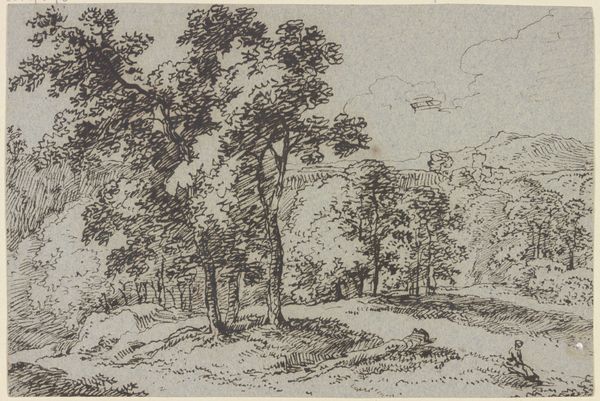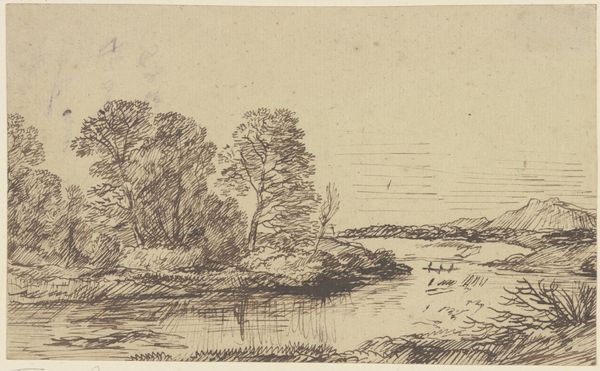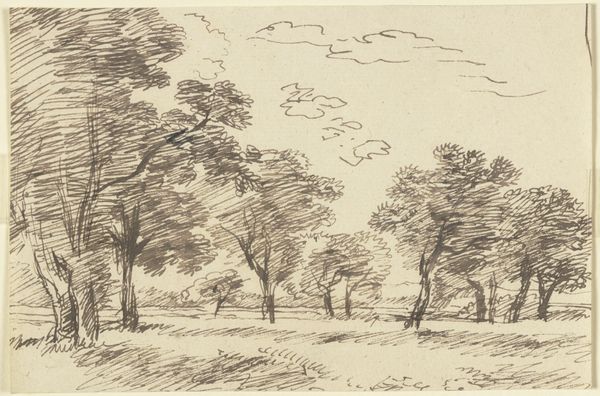
drawing, etching, ink
#
drawing
#
etching
#
landscape
#
etching
#
ink
#
15_18th-century
Copyright: Public Domain
Editor: This is "Grove near a Brook," a drawing made with etching and ink by Franz Kobell, sometime in the 18th century. It feels very immediate, like a quick impression captured on the spot. The details are so minimal! What story do you see here? Curator: I see a society valuing, even cultivating, its relationship with nature. Landscapes became incredibly popular in the 18th century. This wasn't just about pretty scenery; it was about owning and controlling land, representing a certain level of social status. Kobell’s piece, even in its seeming simplicity, speaks to a visual language understood by the elite. What elements do you think communicate that here? Editor: Hmm, maybe the careful composition? It’s not a chaotic wilderness, but rather an ordered arrangement of trees and open space. It feels designed. Curator: Precisely! Consider the role of hunting lodges or gardens in estates of the time. Art like this reflected that lifestyle. And landscapes became increasingly tied to national identity, suggesting pride in one’s land. Does knowing this change how you see the work? Editor: It does. I was drawn to the apparent spontaneity, but now I see it’s more deliberate, speaking to the visual rhetoric of status and power. The drawing then becomes a statement about land ownership and social identity. Curator: Exactly. And by understanding those social and historical layers, we can understand how something as simple as a drawing becomes part of a bigger conversation about culture, identity, and the very idea of 'nature' itself. Editor: I never would have looked at it that way at first, but now the whole drawing seems charged with this historical weight. Thank you for shedding some light.
Comments
No comments
Be the first to comment and join the conversation on the ultimate creative platform.
